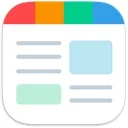What Is the Health Insurance Marketplace?
The health insurance marketplace is a place to buy health insurance through your state or the federal government, depending where you live.

Many, or all, of the products featured on this page are from our advertising partners who compensate us when you take certain actions on our website or click to take an action on their website. However, this does not influence our evaluations. Our opinions are our own. Here is a list of our partners and here's how we make money.
The health insurance marketplace is a marketplace (also called an exchange) to purchase individual, family and small business health insurance, run by the federal government. It was established by the Affordable Care Act in 2010, and health plans on the marketplace must meet minimum coverage requirements.
What is a marketplace health plan?
A marketplace health plan is any plan purchased through the health insurance marketplace, which is run by the federal government.
Marketplace plans are available in metal “tiers”: Bronze, Silver, Gold and Platinum. There are also Catastrophic plans, but those are available only to people under 30 or who meet a hardship requirement.
Marketplace health insurance plans by tier
Metal tier | Costs covered by plan | Deductible level |
|---|---|---|
Bronze | 60%. | High. |
Silver | 70%. | Medium. |
Gold | 80%. | Low. |
Platinum | 90%. | Low. |
Source: HealthCare.gov
Catastrophic marketplace plans are available to a subset of consumers — people under 30 or those who can’t find an affordable plan on the marketplace, based on their income.
Catastrophic plans cover preventive services at no cost, plus three primary care visits, but all other covered care is out of pocket until you reach the high deductible, which is $9,200 for an individual and $18,400 for a family in 2025 ($10,600 and $21,200 for 2026).


Get the Care You Need
What do marketplace health plans cover?
All plans on the health insurance marketplace must meet minimum requirements, according to HealthCare.gov:
Plans must cover 10 essential health benefits: These include emergency services, hospitalization, pregnancy care, mental health services, prescription drugs, laboratory services, and preventive and wellness services, among other things. (See all essential health benefits.)
Plans must offer birth control coverage and breastfeeding benefits.
Plans must cover pre-existing conditions (including pregnancy).
Some plans may offer additional benefits, including dental and vision coverage.
Who can use the health insurance marketplace?
Anyone can use the health insurance marketplace, as long as you live in the U.S., you’re a U.S. citizen or non-citizen here legally, and you’re not in jail. (You also can’t enroll if you have Medicare.)
Small businesses can also use the program’s Small Business Health Options Program (SHOP) to buy small group plans for their employees. SHOP insurance is available to businesses with 50 employees or less.
How to enroll in a marketplace plan
If you’re eligible for a marketplace plan, here’s how to sign up:
Go to HealthCare.gov.
Click “Log In.” If you don’t have an account, you’ll be prompted to create one.
Create an account. (If your state runs its own marketplace, you’ll be sent to that page to apply.)
Complete the application for coverage, including your personal information, information about the people in your household, and your income and expenses.
Once you submit your application, you’ll get information on whether you qualify for premium tax credits or assistance to help pay for premiums and other costs.
Compare plans available to you and choose one that best meets your needs.
Pay your premium to activate coverage. You’ll pay the insurance company, not the marketplace.
If you need help with your application, HealthCare.gov offers an online directory of trained assisters or agents/brokers who can assist you.
You can also apply over the phone by calling the marketplace call center at 800-318-2596 (TTY: 855-889-4325).
Best marketplace plans by state
We analyzed the best health insurance plans in 15 states.
Click on a green-shaded state to see the best marketplace plans available there.
Open enrollment vs. special enrollment periods
Each year, there’s an open enrollment period for the health insurance marketplace, and for many states it goes from Nov. 15 to Jan. 15. That said, some states have slightly different dates for their own open enrollment period, so make sure to check yours.
Outside of open enrollment, you can’t sign up for a marketplace plan unless you have a life event that qualifies you for a special enrollment period.
Qualifying life events include, according to HealthCare.gov:
Losing health coverage: Losing a job, graduating from college, turning 26 and aging out of a parent’s plan, etc.
Household changes: Marriage, divorce, having or adopting a child, or a death in the family.
Moving: To a new ZIP code, to a new county, or to or from a place where you’re going to school or living and working, etc.
Income changes: If your income now qualifies you for a different kind of coverage.
Citizenship changes: You become a U.S. citizen.
Other changes: Leaving prison, starting or ending your time with AmeriCorps, becoming a member of a federally recognized tribe, etc.
If you enroll during open enrollment by Dec. 15, your coverage will start Jan. 1. If you enroll by Jan. 15, your coverage will start Feb. 1. If you enroll during a special enrollment period, coverage will start on the first day of the next month.
Financial assistance and subsidies
Depending on your income and circumstances, you might qualify for tax credits or assistance to help you pay for health insurance.
Premium tax credit
A premium tax credit helps pay your health insurance premiums on a marketplace plan. The calculation takes your income and household into account.
You may be eligible for a premium tax credit if:
You’re a U.S. citizen or are a legal resident of the U.S.
You file taxes as an individual or as a married couple filing jointly.
You don’t have access to a qualified employer plan, or your employer plan isn’t affordable. (The plan must meet minimum coverage requirements, with an employee premium that’s no more than 9.02% of household income in 2025.)
You aren’t eligible for Medicare, Medicaid or the Children’s Health Insurance Program (CHIP).
Your household income is at least as high as the federal poverty level.
You’re buying a Bronze, Silver, Gold or Platinum marketplace plan. Catastrophic plans aren’t eligible for premium tax credits.
Cost-sharing reduction
If you’re eligible for a premium tax credit, you might also qualify for a cost-sharing reduction, which can lower your out-of-pocket costs like copays and deductibles. This assistance is calculated on a sliding scale based on household income: The less you make, the more assistance you’ll get.
You may be eligible for a cost sharing reduction if:
You’re eligible for a premium tax credit.
You’re buying a Silver plan.
Your household income falls between 100% and 250% of the federal poverty level.
State vs. federal health insurance marketplaces
Although the marketplace at HealthCare.gov is run by the federal government, several states run their own health insurance marketplaces. State marketplaces may go by different names, such as Georgia Access or Maryland Health Connection. If you live in one of those states and visit HealthCare.gov, the website will send you to your state marketplace site to shop for coverage.
Here's a map of federally run and state-run marketplaces:
ON THIS PAGE
ON THIS PAGE






